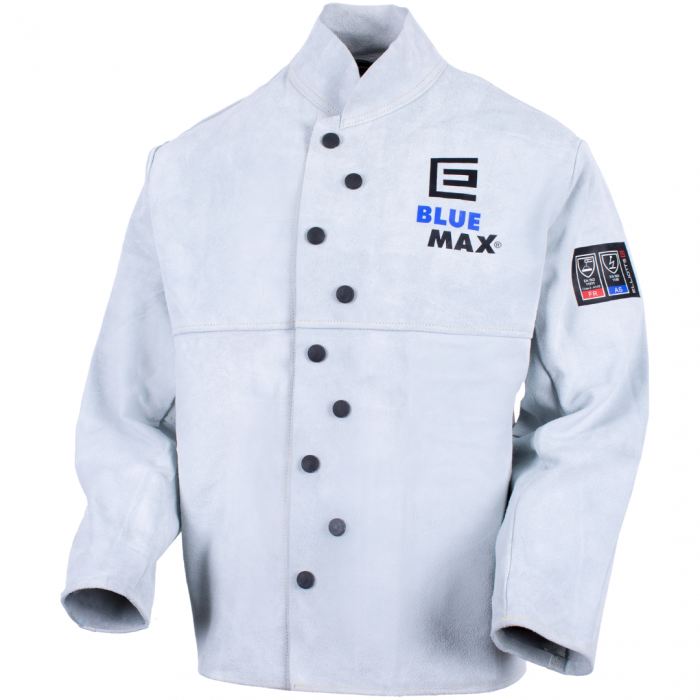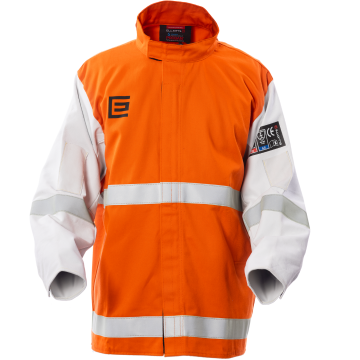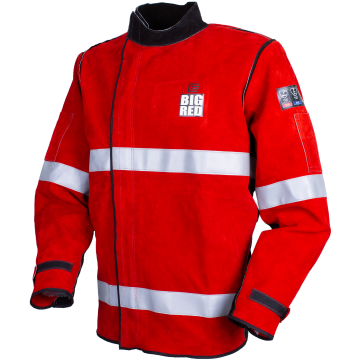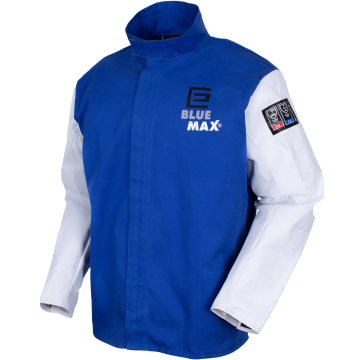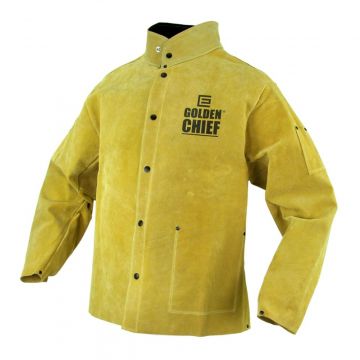Choosing the Right Welding Jacket

When there is such an extensive range to choose from, it is not always easy to select the right welding jacket. In this blog, we'll explore four key considerations when choosing a welding jacket, focusing on material and durability, comfort, and additional features.
1. Material & Durability
The material of a welding jacket is arguably the most critical factor to consider, as it directly impacts its durability and protective capabilities. Welding jackets are typically made from flame-resistant materials such as leather, flame-resistant cotton, or a combination of both.
Leather jackets are renowned for their excellent heat resistance and durability, making them suitable for heavy-duty welding applications.
On the other hand, flame-resistant cotton jackets, made from Proban for example, are lightweight and offer greater breathability, making them ideal for less intense welding tasks.
When selecting a welding jacket, it's essential to assess the specific welding environment and choose a material that aligns with the job requirements. Keep an eye out for reinforced stitching and double-layered materials in high-wear areas to ensure longevity and protection against sparks and spatter.
2. Comfort
While protection is paramount, comfort should not be overlooked, especially considering the extended periods of time welders spend on their feet. A comfortable welding jacket enhances productivity and reduces fatigue. Look for jackets with adjustable cuffs and waistbands to achieve a snug fit, providing flexibility and freedom of movement. Ventilation features or breathable materials, can help regulate body temperature during prolonged welding sessions.
Investing in a welding jacket with an ergonomic design and a comfortable fit ensures that welders can focus on their work without being hindered by discomfort or restricted movement.
3. Additional Features
Beyond material and comfort, consider additional features that can enhance the functionality and practicality of a welding jacket. Pockets are essential for storing small tools and personal items. A jacket with a high collar and a chin guard also provides extra protection for the neck and throat areas, shielding against sparks and heat.
Furthermore, some welding jackets come equipped with reflective strips, improving visibility in low-light conditions and enhancing overall safety.
4. Maintenance and Cleaning
Proper maintenance is crucial to prolong the life of a welding jacket and ensure its continued effectiveness. Check the manufacturer's guidelines for cleaning and care instructions, as different materials require specific methods of laundering. Some jackets are machine washable, while others may need specialized cleaning solutions.
Regular inspections for wear and tear, along with prompt repairs or replacements, will ensure that the welding jacket remains a reliable and durable safeguard in the demanding welding environment.
Selecting the right welding jacket is a crucial decision for welders, impacting both safety and comfort during work. Whether you are MIG, TIG, or Stick welding, indoors, outdoors, working in confined spaces, or at heights, Elliotts have the protection you need.

